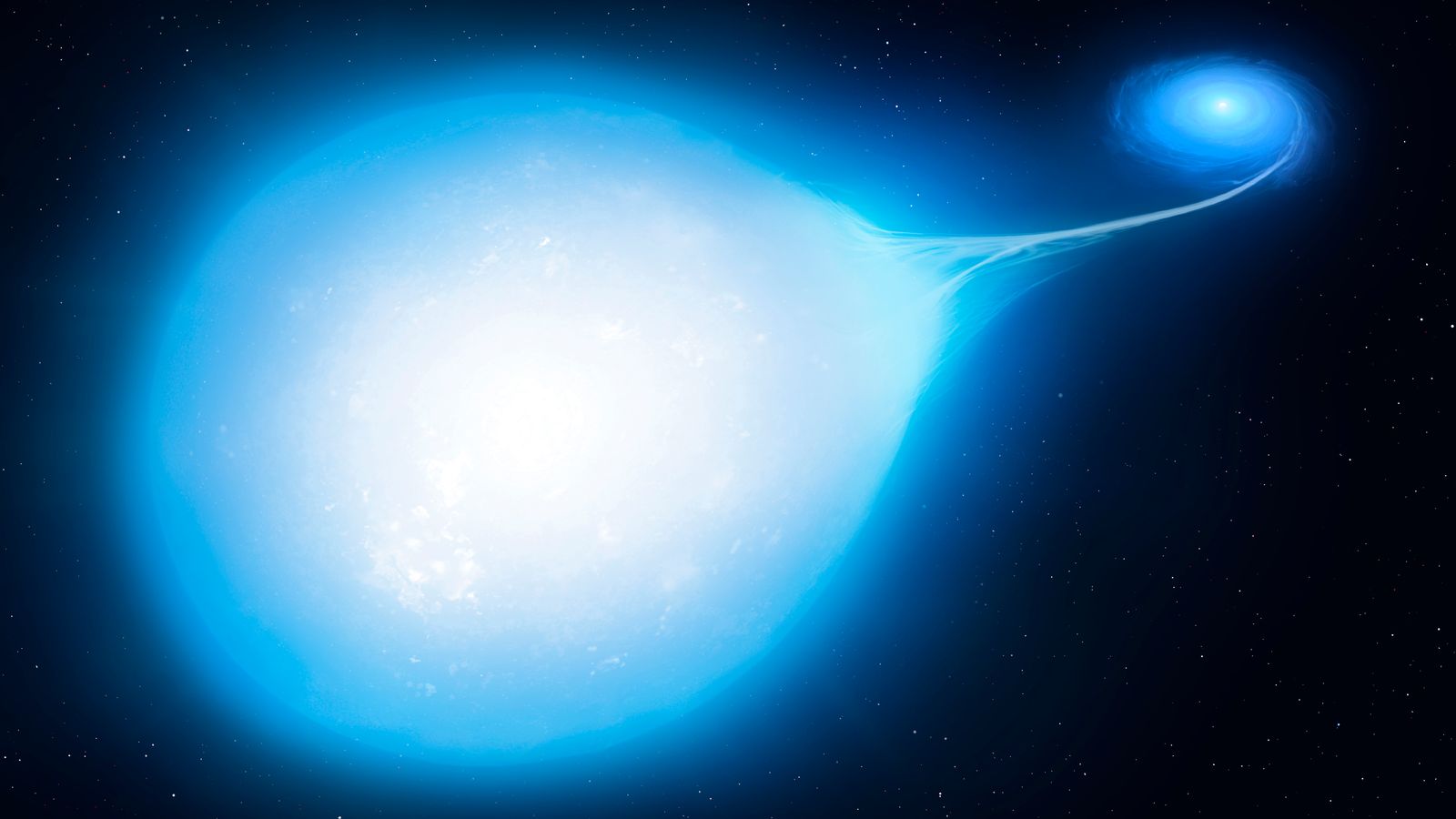An international team of astronomers has discovered a teardrop-shaped star that it predicts is about to explode in a supernova.
The star’s unusual shape is caused by a nearby white dwarf distorting the ball of burning gas with its intense gravity.
The pull of the white dwarf is so great that it will eventually cause the teardrop-shaped star to explode and consume both, according to the research published in the journal Nature Astronomy.
Astrophysicists at the University of Warwick discovered the star system which has the unusual property of featuring a white dwarf whose core will one day be reignited.
The binary star system known by the designation HD265435, is located roughly 1,500 light years away from Earth.
It comprises a hot subdwarf star and a white dwarf star orbiting each other closely at a rate of around 100 minutes.
White dwarfs are the remnants of stars that have burnt through all their fuel and collapsed in on themselves, leaving only electron-degenerate matter where no fusion is taking place.
These star types are believed to be the final evolutionary state of stars that aren’t massive enough to become either neutron stars or black holes.
Because the material inside these stars doesn’t undergo nuclear fusion, the star has no source of energy to support itself against gravitational collapse – instead quantum physics prevents the electrons making up the star’s matter from being compressed together, maintaining their structural integrity.
In this binary system, the white dwarf star will drain so much mass from its colleague that it will reach the Chandrasekar limit, approximately 1.4 times the mass of our own sun, reigniting its core.
The study’s lead author, Dr Ingrid Pelisoli from the University of Warwick Department of Physics, explained: “If the white dwarf accretes enough mass from the hot subdwarf, so as the two of them are orbiting each other and getting closer, matter will start to escape the hot subdwarf and fall on to the white dwarf.
“Another way is that because they are losing energy to gravitational wave emissions, they will get closer until they merge. Once the white dwarf gains enough mass from either method, it will go supernova,” Dr Pelisoli added.
